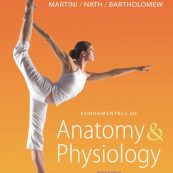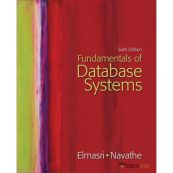Test Bank for Psychological Testing: History, Principles and Applications, 7/E 7th Edition : 0205961061
$38.00
A Descriptive Test Bank for Psychological Testing: History, Principles and Applications , 7/E By Robert J. Gregory, ISBN-10: 0205961061 ISBN-13: 9780205961061
- Description
- Reviews (0)
Description
You will receive this product immediate after placing the order
A Descriptive Test Bank for Psychological Testing: History, Principles and Applications , 7/E By Robert J. Gregory, ISBN-10: 0205961061 ISBN-13: 9780205961061
Chapter 1: Applications and Consequences of Psychological Testing
Chapter 2: The History of Psychological Testing
Chapter 3: Norms and Reliability
Chapter 4: Validity and Test Development
Chapter 5: Theories and Individual Tests of Intelligence and Achievement
Chapter 6: Group Tests and Controversies
Chapter 7: Testing Special Populations
Chapter 8: Origins of Personality Test
Chapter 9: Assessment of Normality and Human Strengths
Chapter 10: Neuropsychological and Assessment and Screening
Chapter 11: Industrial, Occupational and Forensic Assessment
Chapter 12: Legal Issues and the Future of Testing
Topic 1A
The Nature and Uses of Psychological Tests
The Consequences of Testing
Definition of a Test
Case Exhibit 1.1: True-Life Vignettes of Testing
Further Distinctions in Testing
Types of Tests
Uses of Testing
Factors Influencing the Soundness of Testing
Standardized Procedures in Test Administration
Desirable Procedures of Test Administration
Influence of the Examiner
Background and Motivation of the Examinee
Summary
Key Terms and Concepts
Classroom Discussion Questions
1. An interesting way to generate classroomdiscussion on the nature and definition of a
test is to bring in one or more quasi-tests that can be found in any bookstore. For
example, the Luscher Color Test or variations thereof can be found in most bookstores.
After describing and demonstrating these tests, ask students to discuss whether they
meet the criteria of a psychological test.
2. It is usually possible to create a lively debate by asking students who should have
access to psychological tests. For example, should anyone be able to purchase a copy
of the Wechsler Adult Intelligence Scale-III? Should a high school teacher who has
taken a course on individual intelligence tests be allowed to administer the WAIS-III?
3. An interesting discussion question is whether school-based testing (e.g., in high
school) should be norm-referenced (e.g., who is at the 99
th
percentile?) or criterion-
referenced (e.g., can each student reach a specific skill level in each subject matter?).
The purposes of testing and the nature of a just society usuallyemerge from this kind of
discussion.
4. A useful way to begin Topic 1A is byasking students to catalogue the numerous
ways in which test results can be swayed by extraneous factors. Thatis, other than the
variable being measured, what other factors can cause test scores to be artificially high
or low? It is especially helpful to have students provide specific examples.
5. Sensitivity to disabilities is another usefuldiscussion topic. What kinds of disabilities
might examinees possess? How might examiners recognize these disabilities? What
adjustments are appropriate in response to a disability?
6. A good broad-based question for Topic 1A is to ask the class to brainstorm as many
different applications of psychological testing as possible. After the initial round of
discussion, it may be helpful to list the main types ofpsychological tests (i.e.
intelligence, creativity, personality, neuropsychological, etc.) to generate further
responses. This exercise should help provide a relevant introduction and appreciation
for the nature and uses of psychological testing.
Extramural Assignments
1. A challenging assignment is to ask students to invent a test. Once they have selected
a construct for measurement, they can be challenged to devise items and develop the
test throughout the semester, paying special attention to the concepts introduced in the
first few chapters of the text.
2. Students may gain insight into the ethics of testing if they are encouraged to poll
others about the extent of cheating on standardized tests. It would be interesting to ask
other students (anonymously, of course) to recount instancesin which they or others cheated on any kind of standardized test, whether group or individual. Students could
produce a brief catalog of these instances, discussing the likely effect on test validity,
etc.
3. Tests come in an amazing variety of types and purposes. Ask students to review the
latest editions of the journals listed at the end of Topic 1A to write brief descriptions of
new tests. Offer to give a small prize (e.g.,extra credit) for the student who finds the
most unique or peculiar test.
4. Ask students to track down biographies, autobiographies, and journal articles about
persons who were misdiagnosed by psychological tests because of unrecognized
handicaps. The students could write a short synopsis or present a brief oral report to the
class.
5. Divide the class into two to four groups and have each group collect data on a digit
span task under different conditions. For example, the rate of presentation might be the
independent variable, with different groups presenting at .5, 1.0, 1.5, and 2.0 seconds
between digits. The groups could bring their data back to class and compare the effects
of varying the presentation methods.
Classroom Demonstrations
1. The importance of standardized procedure is a topic worthy of demonstration. An
easy way to approach this issue is to describe or demonstrate an existing test or
subtest, and then ask students to describe the probable effects of variations from
standardized procedure. Digit span tests are especially useful in thisregard. In addition
to discussing the effects of nonstandard procedure, the instructor can demonstrate the
effects. For example, students can be asked to write down orally presented digit
sequences under various conditions: rapid reading (more than one digit per second),
background noise (e.g., have a student cough several times during the presentation),
meaningful sequences (e.g., 1-800-325-3535-1492-1776). By tallying class averages for
these various conditions, the students can see the value of standardized procedures.
2. The textbook outlines eight different kinds of tests. For some of the tests in each
category, it would be possible to demonstrate sample items. Instructors need to be
sensitive to their own responsibilities, but it is usually possible to demonstrate tests
without breaching test security. For example, college students can be shown sample
items from earlier editions of intelligence tests with no harm;MMPI items can be read to
show students the range of item types; the structure of interest inventories can be
discussed without invaliding them; and so on.
3. This would be a good time to bring out the Mental Measurements Yearbooks and the
Test Critiques volumes and circulate them in class. Also, The Journal of
Psychoeducational Assessment and The Journal of Clinical Psychology are useful
journals for demonstrating the kinds of research that new tests engender.
4. Subjective judgment in scoring can be demonstrated in class by reading students the
criteria for a vocabulary item on an outdated test (e.g., the WISC) and then asking
students to rate various responses as 0, 1, or 2. Although there will usually be a high
level of agreement, certain responses will prove difficult to score, with the result that
ratings vary widely.
5. The importance of rapport can be demonstrated through role playing. The instructor
can “test” several students with a hypotheticalexamination. By alternating demeanor
between friendly and harsh, the effect of rapport can be demonstrated quite effectively.
6. Divide the class in half. Have both groups develop a simple and benign test that they
can administer in class (i.e. how many times they can flip a coin in 30 seconds, how
many fairy tales they can name in a minute,etc.). Once they have created a test,
instruct them to test each member intheir group and record scores to create a
standardized sample. Then have each group administer their test tomembers of the
opposite group and record where each individualfalls in relation the standardized
sample. They can chart the results on the blackboard. This is an interactive way to
familiarize students with the basic features of norm-referenced tests.
Essay Questions
1. Outline the characteristics of a test. Using a hypothetical test of your own invention,
provide evidence that it is truly a test as defined in the textbook.
2. Discuss the potential uses of psychological tests.
3. Define and differentiate norm-referenced testing and criterion-referenced testing.
4. What is behavioral assessment? Cite a new example of a behavioral assessment
procedure.
5. Define test anxiety and summarize the research findings with respect to its correlates.
6. Describe desirable procedures for the administration of group tests.
7. Describe how a correction for guessing can be used in test scoring. For example,
with a 50-item multiple choicetest that has four optionsper question, what should be
the corrected score for an individual who answered 35 items correctly, answered 9
items incorrectly, and left 6 items blank? Clarify your answer.
8. Name two mild disabilities that are frequently overlooked in testing. Identify some
signs that will help the examiner detect these impairments and describe adjustments
they should make when testing these individuals.
9. Why is comprehensive training in test administration critical to proper utilization of tests,
and how has this been shown to be insufficient in past studies?
Be the first to review “Test Bank for Psychological Testing: History, Principles and Applications, 7/E 7th Edition : 0205961061”
You must be logged in to post a review.














Reviews
There are no reviews yet.